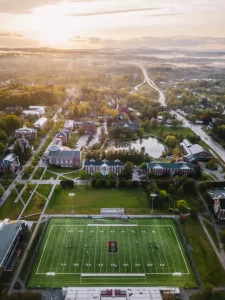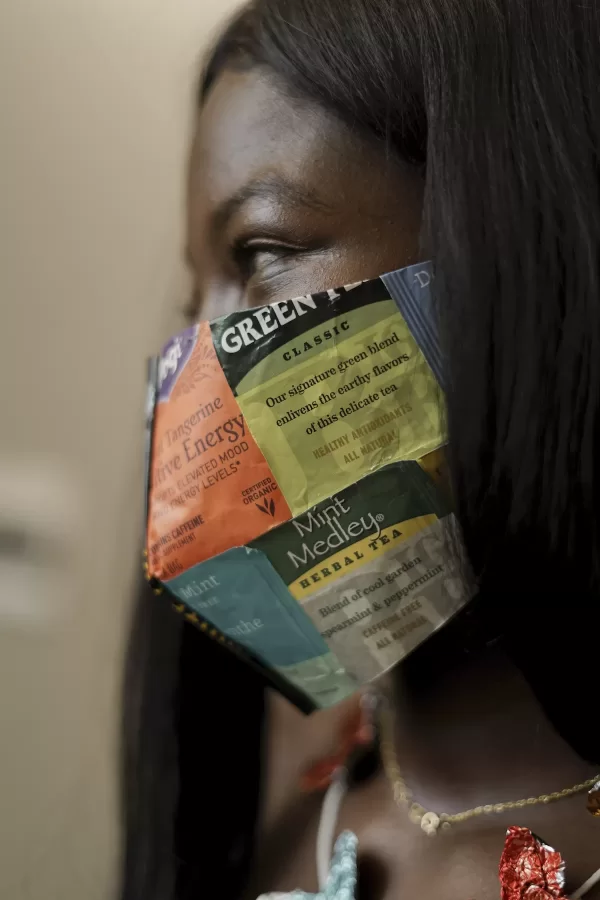Sustainability Roadmap
The Bates College Sustainability Roadmap
Developed by Bates’ Committee on Environmental Responsibility
President’s Letter
Dear Members of the Bates Community,
I am delighted to share with you the Bates College Sustainability Roadmap, developed by Bates’ Committee on Environmental Responsibility — a team of people from across the college, including students, faculty, and staff. This plan is meant to guide Bates’ sustainability efforts from the present moment through 2030, with the goal of achieving a net positive impact for our community and, by extension, for the wider world.
The term for this goal is “Climate Positive.” It is the next step after becoming carbon neutral — a status Bates was one of only seven colleges in the U.S. to achieve by 2019. In the years leading up to 2019, Bates had set out to do as little environmental harm as possible. This included making choices to: use renewable heating fuels, develop the infrastructure to support electric vehicles, reconsider how we retrofit our older buildings and approach new construction, and shift our culture with regard to recycling and reducing food waste. These efforts not only reduced our carbon footprint but also saved the college money, allowing us to redirect resources to higher purposes. Over the past five years, the energy efficiency initiatives enacted by Bates have reduced our annual utility costs by approximately $1 million.
Over the same period, the need to take action to slow and reverse climate change has become ever more urgent. The latest Intergovernmental Panel on Climate Change report, released at the end of February, assesses the damage to the planet and the human suffering, particularly among already vulnerable communities, that has already occurred because of human-induced climate change. The IPCC had previously given the world just a decade to reduce its global greenhouse gas emissions by a staggering 50 percent or face a future where we are unable to keep global warming in check. This new report illuminates how much our world has already changed.
Bates will now move from minimizing our negative effects on the environment to creating a net positive impact. We would rather seek to do “more good” than settle for being “less bad.” This new roadmap is our path forward. It presents both large aspirational goals and practical next steps, and it will engage the entire community in helping us make progress, both in infrastructure and behavioral changes.
We all owe a debt of gratitude to Tom Twist, our sustainability manager, and the Committee on Environmental Responsibility for their tireless and effective efforts to develop this plan, which has been endorsed by the Board of Trustees. The CER has done a deeply impressive job of engaging the entire Bates community in the process, leveraging the commitment and creativity of individuals across the college. It is a powerful example of the impact that a motivated and mission-driven set of diverse stakeholders can have, and it offers a compelling model for the college as it works to address other institutional challenges. It also reinforces our mission to prepare our students to be the leaders of the next generation, bringing the best learning to bear on the most important challenges facing our planet and worlds we share.
I encourage you to spend some time familiarizing yourself with this roadmap and thinking about the ways that you can contribute to the college’s continued progress on sustainability. I will be doing the same.
All my best,
Clayton

These efforts are a win-win for Bates: The college has reduced waste and achieved carbon neutrality in a manner that makes sound financial sense.
President Clayton Spencer
Background
In May of 2019, Bates College became a carbon neutral campus — a goal which has been achieved by only a handful of schools nationwide. Envisioned by our Bates community in 2010, when we created our first Climate Action Plan, our goal was to reach carbon neutrality by 2020. This was an ambitious goal at the time, as we had only a rough outline of a plan to get us there and it would represent significant expenditures for the college. Yet through consistent attention from leadership, and advocacy from students, faculty, and staff, we were able to make significant headway, and met our goal one year early. Today, Bates ranks amongst the top 10 greenest schools in the nation. We have been able to accomplish these milestones by prioritizing tangible on-campus actions:
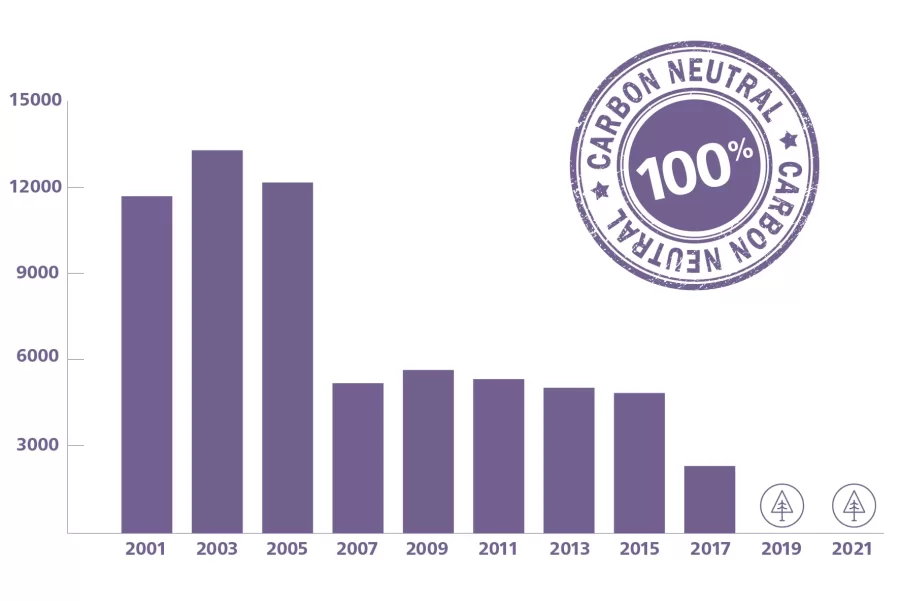
Improving Energy Efficiency
Bates College is located in Maine, which experiences cold, snowy winters, and many of our buildings date back to the post-Civil War era. Historically this has meant that the college expended large amounts of energy to keep its buildings at a comfortable temperature. Our collective work to insulate buildings, improve heat capture from ventilation, and transition to LED lighting has helped reduce the carbon footprint of our campus roughly 30%.
Transitioning to Renewable Energy
In 2016, Bates College began to transition its central heating plant away from fossil fuels, and towards a renewable, biomass-based liquid fuel. In 2005, we began to purchase green power. Today 100 percent of our electricity is generated from green sources. In addition, we are in the process of working to build a local solar array which will represent 75% of our electricity usage.
Empowering Sustainability Culture
Bates College students are intimately involved in every aspect of our sustainability initiatives: they crunch numbers for project financing and carbon footprint calculations, they help write grants for electric vehicle charging stations, and they themselves install solar panels on our buildings. We believe by sharing information surrounding sustainability, not only will the hoped-for outcomes be more thoughtful and nuanced, but a greater percentage of our community will feel responsible for our collective environmental welfare.
Why We Care
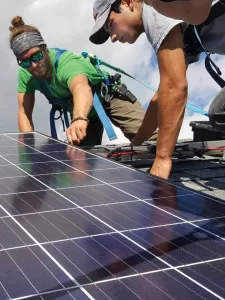
At Bates, our mission statement speaks of a commitment to responsible stewardship of the wider world. We believe that we have a moral imperative to have a net positive impact in this arena and that we can and should do so through our academics, community, and our environmental footprint. At Bates, every individual has a role to play in making our community more sustainable.
The latest Intergovernmental Panel on Climate Change (IPCC) report gives the world just a decade to reduce its global greenhouse gas emissions by a staggering 50% or face a future where we are unable to keep global warming in check. We are already seeing the effects of unchecked climate change in the form of increased drought, dangerous heat waves, forest fires, heightened severity of hurricanes, sea level rise, political destabilization from climate refugees, and the beginnings of ecosystem collapse.
In addition to the ethical imperative to become more environmentally benign, Bates and schools around the country are also getting strong business signals to become more sustainable. A recent Princeton Review survey found that 78% of incoming students consider an institution’s level of commitment to sustainability as a factor in making their college decisions.
From an admissions perspective, the upside to an ambitious climate commitment is enormous. At Bates, almost 75% of our revenue comes from tuition, and so maintaining the size and interest of the applicant pool is vital to our future.
A strong sustainability plan also helps connect the college to engaged alumni, and presents multiple avenues for pairing current students with alumni- managed businesses, increasing their career opportunities. The UN Council on Climate Change estimates that by 2030, the sustainability sector will grow to a $9 trillion annual industry worldwide. Alumni that feel well and wisely supported in such a burgeoning field will be more likely to stay connected to Bates in the future.
A thoughtful sustainability plan can create savings for any business or institution. Over the past five years, the energy efficiency initiatives enacted by the college have reduced our annual utility costs by approximately 1 million dollars. We recognize that future variables could decrease those savings, but the energy investments we’ve made are already paying for themselves. There can also be opportunities for novel revenue streams. Bates is partnering on a ground-mounted solar array project that is expected to generate enough electricity to represent 75 percent of the college’s total power use, opening up opportunities not only for future savings, but revenue.

the new solar array will represent three-quarters of our total power use

the maximum grant for Green Innovation projects

reduction in utility costs each year
Green Innovation Grants

The Green Innovation Grant program encourages Bates folks to become active stakeholders in advancing sustainability at the college. It does so by awarding microgrants to students, staff, and faculty for projects that make Bates more environmentally sustainable — often in surprising ways, like Henri Emmet ’21’s $240 grant to raise larvae of the beetle species Zophobas morio, which not only eat styrofoam but are nourished by it and reduce it to harmless organic matter.
Recommended Initiatives
Having hit our goal of becoming carbon neutral, we believe Bates should not break stride in its efforts toward greater sustainability. Carbon neutrality was an extremely important milestone to reach. It represents an effort for the college to cause as little environmental harm as possible — in short, to be “the least bad” that we can be. We believe the next logical step is to move from minimizing our negative effects to moving toward having a net positive impact. It is not enough to settle for “less bad” when we can seek to be “more good.” Bates College is already having a net positive impact in a whole host of fields, from student life, to academics, to our broader community. This aspiration would bring our environmental footprint in line with our overall mission.
One term for a net positive relationship with the planet is Climate Positive. It refers specifically to taking in more greenhouse gases than an individual, business or institution produces. But it points to a much broader mindset of taking responsibility not just for our corner of the world, but for others as well. Climate Positive means being restorative for our climate, our ecosystems, and our people. Though this is a lofty aspiration, we have compiled a number of recommended initiatives and approaches which are practical, grounded, and will move the college towards our goal in a way that is consistent with our staffing and resources.
These initiatives fall within five major areas:

Energy and Climate:
Combine very low energy-use buildings with renewable energy sources to become Climate Positive by 2030.

Academics:
Educate a new generation of sustainability leaders by providing a combination of deep understanding of the environmental issues facing our time, as well as tools with which to seek solutions to our current challenges.

Operations:
Fully integrate sustainability practices into college operations.

Culture:
We aim to continue and expand upon the dynamic of an engaged community by institutionalizing the ethos that anyone who wants to learn about sustainability should feel completely encouraged and welcome within our community.

Governance and Tracking Progress:
Create robust governance structures that ensure integration of sustainability practices across campus.

Energy and Climate
Combine very low energy-use buildings with renewable energy sources to become Climate Positive by 2030.
Buildings
Create buildings that improve the overall quality of life. Increase the energy efficiency of our built infrastructure, including adopting Energy Use Intensity targets (how much energy a building uses per square foot), and updating our standards for all new construction and renovation projects. Avoid materials that contribute to human illness or exacerbate climate change.
New Buildings
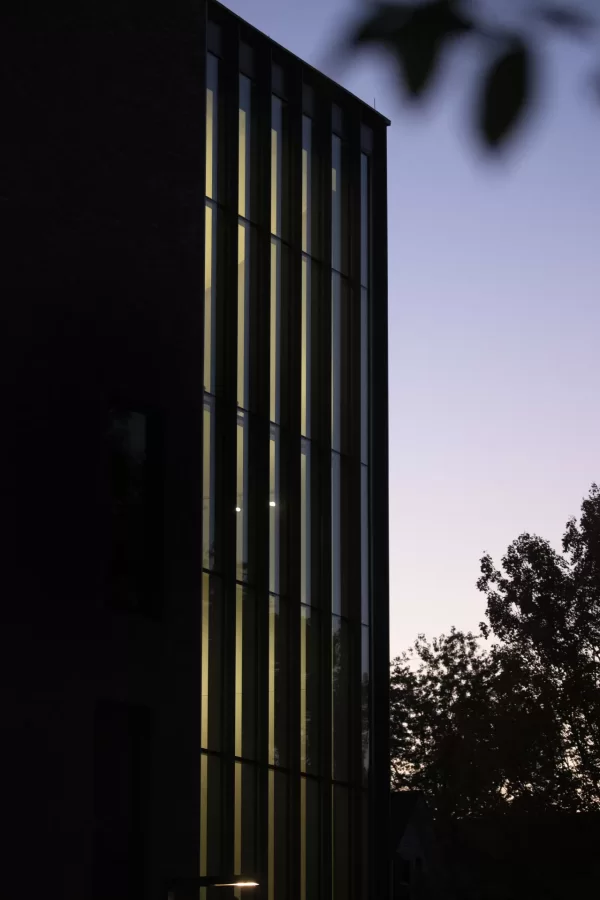
- New campus buildings should meet at minimum the American Institute of Architects (AIA) 2030 Challenge standard, which sets a fossil fuel energy reduction goal of 80% below the average building consumption for that category of building.
- As a stretch goal, we adopt the Passive House design standard, which has a dual goal of very low Energy Use Intensity (EUI) for the building, as well as targeting wasted energy via air leaks. Passive House buildings can be built at cost parity to ordinary buildings above a size threshold of around 20,000 square feet, and see significant (80–90%) reductions in fuel costs.
- New buildings at Bates College should be constructed to be solar ready, and electric vehicle charging station ready. These costs are usually modest in constructing a new building, but to retrofit after the fact can be quite invasive and expensive.
- Evaluate construction materials that sequester, rather than release, carbon dioxide in their manufacture. Explore the use of structural materials like mass timber as a replacement for steel and concrete.
- As our buildings are meant to house and shelter our students, staff, and faculty, it is also important that they are safe and healthy spaces. We feel it is important to promote climate and people-friendly building products, for the health of our community and our environment. We will work with our contractors to exclude Red List materials, which are classified as hazardous to human health and the larger ecosystem, as well as encouraging use of refrigerants with low greenhouse gas warming potential.
Smart Design

At Bates, all renovations and new construction, like the recent Bonney Science Center, are built to a high level of efficiency with a focus on energy performance. We work with architects who specialize in sustainable design to suit specific sustainability features for each new building project.
Existing Buildings
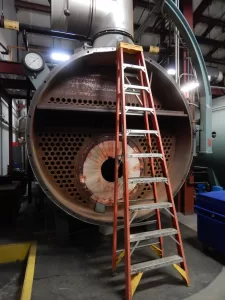
- Major renovations retrofit: Adopt a goal of a 30% reduction in fossil fuel energy use compared to our campus baseline for comparable buildings.
- Minor retrofits: We recommend that the college prioritizes air sealing where it is not practical to enhance building envelope insulation.
- Ensure that Bates has the capability for energy data in real time coupled with an accessible data platform and energy use anomaly detection. This allows us to observe what was heretofore invisible, and opens up a host of opportunities for faculty and students to gain access to real-world data sets for academic applications. It will also create a larger sense of environmental stewardship in the Bates community.
Energy
Promote renewable energy generation and continued phase-out of fossil fuels on campus.
Though Bates has been purchasing green power for 100% of electrical needs since 2005, we believe that a more local approach will better serve the college both financially and environmentally. For this reason, in August 2020, Bates entered into a five megawatt solar project, one large enough to represent 75 percent of Bates’ current electricity use. This step uses Bates’ size as an energy purchaser to “green the grid,” and should provide significant savings for the college throughout the lifespan of the array. We believe that over the course of the next decade, more opportunities like this will arise, and Bates should be positioned to take advantage of these in a timely manner. The following strategies will move the college toward a greener energy future:
- Energy sources: Bates will increase its use of local renewables to 100% of our total load by 2045, targeting on-campus solar opportunities.
- Fuel sources: Continue our demonstrated commitment of using low-carbon biofuels in our central steam plant, and target a phase-out of fossil fuels for heating needs in all interior spaces.
- Long term infrastructure approach: Move towards a more efficient, low- temperature heating distribution system, which allows for greater flexibility of heating sources in our central plant.
- Increase funding for energy efficiency measures. Where we have revenue from future projects, we set the intention to use a portion of them to fund further energy efficiency and sustainability measures.
- Electrification: Explore feasibility of electrification of our heating systems via geothermal or air-source heat pumps. For new heating systems, conduct an energy use evaluation, comparing different heating sources with a Return on Investment (ROI) calculation, comparing both monetary and carbon savings.
Transportation
Decrease our emissions from transportation, via both increasing the efficiency of our vehicles and decreasing our total miles traveled.
Recent projections from Efficiency Maine suggest that one in six vehicles on the road in the next decade will be electric. Bates’ fleet electrification will help decrease our carbon footprint and reduce our vehicle maintenance costs, since electric vehicles (EVs)have been shown to cost roughly 40 percent less than that of internal combustion vehicles to maintain. Fuel costs are 50 percent less for an EV so this switch will also decrease internal fuel costs. With decreasing EV costs and increasing state and national incentives, we will see new opportunities in this realm in the next few years.
- With 14 charging stations on campus, Bates is a leader in EV charging stations per capita. Bates will continue to lead in providing EV charging for our community. New parking lot construction will include EV charging stations, and conduit infrastructure for future EV charging expansions.
- Increase our fleet efficiency through a transition to electric vehicles where possible.
- Support the exploration of remote working options to draw down our commuter footprint. Our staff and faculty commuting activities accounts for over 1,300 metric tonnes of greenhouse gas emissions annually — which on average is about 25 percent of our total emissions. Our experience with COVID-19-mandated remote work beginning in 2020 has shown that a balance of in-person and remote work can be an effective strategy.
- Create a more streamlined method to accumulate data on our staff air travel.
- Work with departments to explore post-pandemic possibilities for assessing the need for certain air travel. There may be opportunities to reduce the need for air travel, and thereby cut carbon emissions, employee time, cost, and staff fatigue.
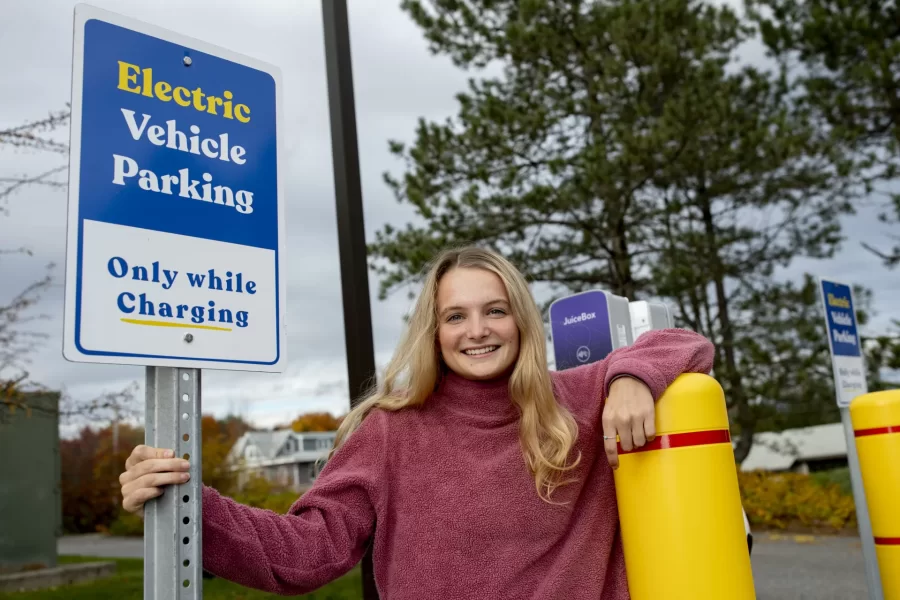
Posing at a new campus charging station is Tamsin Stringer ’22 of Bloomington, Ind. She and fellow EcoReps led the way in securing support and funding for more stations at Bates. (Phyllis Graber Jensen/Bates College)

of campus community plan or hope to buy an EV within 5 years
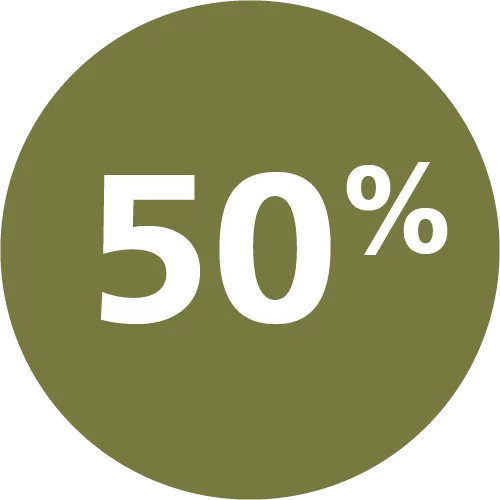
savings in fuel costs between EVs and internal combustion vehicles

campus EV chargers — the most in the NESCAC

Academics
To be a fully Climate Positive school, it is necessary to make strides in the areas of energy and emissions. However, the biggest lever that Bates has at its fingertips is our educational potential. This is a continuation of our long history of environmental advocacy and impact. In order to fully prepare our students for our future world, and to be, as our mission states, a college for the coming times, it is important to provide each graduating class with the skills necessary to function in a workforce that is increasingly impacted by sustainability.
The following are meant to help support our faculty in the integration of sustainability into appropriate curricula.
Curriculum
Educate a new generation of sustainability leaders by providing a combination of deep understanding of the environmental issues facing our time, as well as tools with which to seek solutions to our current challenges.
- Support cross-curricular opportunities to develop an understanding of environmental issues — their complexity, interconnectedness, and relationship to issues of equity and justice.
- Identify and develop skills that can be utilized in developing solutions to existing sustainability issues.
- Further integrate sustainability education into the campus curriculum by exploring the creation of college-wide, department, or program sustainability learning objectives where appropriate.
- Identify classes which are related to sustainability, and work with faculty to infuse climate change and Sustainable Development Goals across the curriculum. Work to increase the number of sustainability-related courses within appropriate disciplines.
- Support a peer-to-peer education platform. To cite an example, the Association for the Advancement of Sustainability in Higher Education (AASHE) offers several cross-collegiate trainings on incorporating sustainability into existing courses via a faculty-to-faculty discussion and sharing of best practices.
- Adopt the model of “campus as a living lab” to incorporate building design and construction, energy use, and other sustainability data into coursework. A more transparent campus will foster increased student engagement and ownership over the sustainability of our workplace and home.
Research
Support sustainability research across departments. There is a critical need for sustainability and climate-related research at this time — both in terms of assessing the magnitude of the problem, and in finding strategic and thoughtful ways to engage with solutions.
- Develop a system for tracking and reporting sustainability data and make these data easily accessible to the campus learning community. Data having to do with our energy usage and carbon footprint can help to engage the students with real-world, material data sets and help promote place-based learning.
- Continue our work on open access of published materials and manuscripts.
- In searches and hiring, seek to expand faculty research expertise connected to climate change and sustainability.
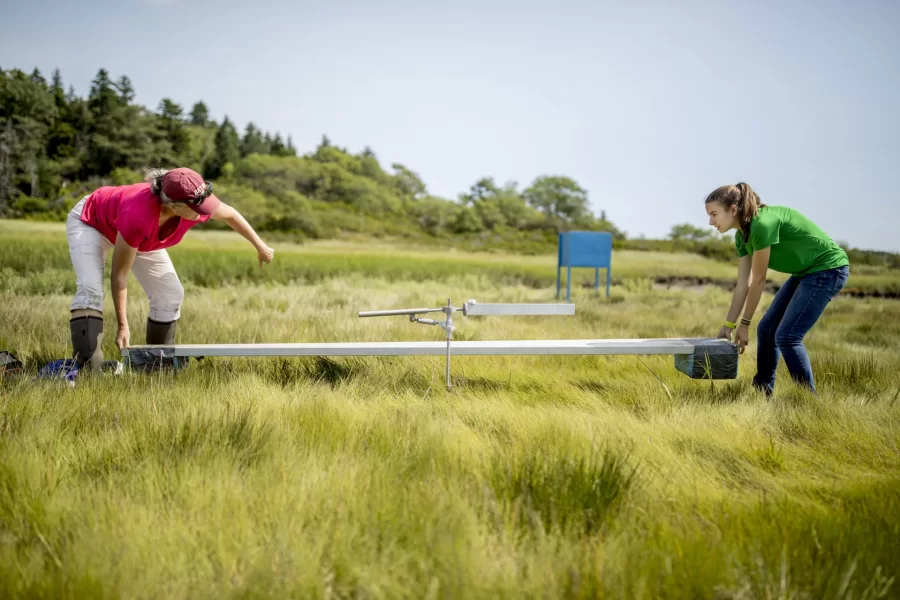

Operations
Fully integrate sustainability practices into college operations. The decisions we make running our daily operations determine how large (or small) our environmental impact is. From the food we eat, to the water we use, to our landscaping choices, to our recycling and waste management, the operations of our campus offer some of the biggest opportunities for cost savings and sustainability gains.
Dining and Campus Events
Decrease the environmental impact of our dining service and campus events.
Over the last decade, Dining, Conferences and Campus Events has made enormous gains in terms of sustainability — diverting more than 80 percent of their waste stream away from the landfill via composting and food waste- reduction measures. They have also increased their percentage of local and organic food, and drastically reduced their number of takeout containers. Over the next decade, the goals are:
- 30 percent reduction in packaging with a focus on plastics
- 25 percent reduction in energy consumption through the purchase of more energy efficient equipment
- 25 percent reduction in food waste through education
- Increase our percentage of local and organic food where possible
Recycling/Waste
Through a variety of education and policy initiatives, we hope to send less material to the landfill over the coming decade.
Currently, Bates recycles roughly 30 percent of its campus waste, diverting it from the landfill or incinerator. This is done through our single-stream recycling program, our campus composting initiative, and our movement away from single-use items.
Trashion Show
Each November at the Trashion Show, students design and model outfits made from campus trash. Produced by the student EcoReps, the event is about “fun and ridiculousness and lovely outfits,” says Tom Twist, Bates sustainability manager, but with an important message: “To increase awareness that we’re still wasting a lot — and that Bates is doing a lot of things to be more sustainable.”
- Increase recycling rates 20 percent by 2030, via sorting education, standardized bins and signage, and a targeted phase out of single-use items.
- Expand campus composting program by 2030 by 25 percent.
- Education: engage first year programs, and promote a green certification course campus-wide.
- Zero Waste Events: sponsor at least one zero waste event per year.
Water
- Reduce water use on campus by 20 percent from 2001 baseline.
- Target a high percentage of recaptured water use from the Central Steam Plant. To not do so represents both a loss of treated city water and valuable heat energy from our boilers.
Land Use
- Move towards regenerative landscaping practices.
- Adopt Integrated Pest Management practices on campus.
- Move further towards incorporating spaces that attract native pollinators.
Procurement
- Develop guidelines for campus-wide sustainable procurement policies by 2025. Focus on optimizing health, utilizing resources efficiently, reduction of waste, and minimizing costs.
- Continue to use green products where possible and minimize single-use items where alternatives exist.
Bates Dining Services
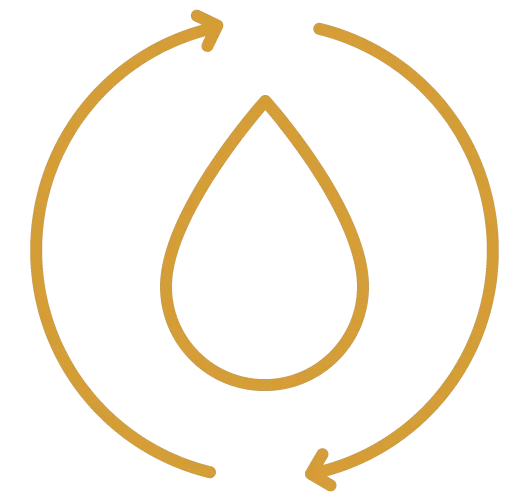
Bates Dining Services is a model of environmental stewardship and has successfully created a system that conserves water and energy and diverts over 80% of its waste from the solid waste stream. These practices, perfected over decades, are why Bates Dining has been three-star-certified as a green restaurant for nearly 20 years.

Culture
Bates is exceptional in the degree to which it involves our students in real, tangible, high-level sustainability projects on the campus. Students are not relegated to feel-good activities without meaningful impact, but rather are integrally involved in every single sustainability decision and project on our campus. We aim to continue and expand upon this dynamic by institutionalizing the ethos that anyone who wants to learn about sustainability should feel completely encouraged and welcome within our community.
Diversity, Equity, and Inclusion
Foster inclusivity and equity within sustainability programs.
- Support movement towards an informed, diverse student body that is educated and active in advancing equity in the socio-economic space.
- Office of Equity and Inclusion: Continue to work together to inform the sustainability movement and ensure equality of opportunity in this area
Engagement
Increase sustainability engagement with all stakeholders, both on and off campus.
- Empower students to be actively engaged in the sustainability of the campus via programs like the EcoReps, Green Innovation grants, student clubs, green certification, committee work, First-Year Orientation, and the garden.
- Expand extracurricular opportunities for students to get involved in sustainable initiatives.
- Support student, faculty, and staff sustainability education via peer-to-peer education.
Community Partners
Work with the city of Lewiston and the state of Maine to participate in cooperative planning around climate change and resiliency — both on campus and in the surrounding community.
Shared Vision
Promote sustainability initiatives with other departments via alignment with mutual goals, and increased visibility and communication.
- Alumni: Support Advancement and the Center for Purposeful Work in creating a sustainability alumni network and a system to identify alumni that are active in the realm of sustainability.
- Prospective Students: The Sustainability Office will work with Admission and Campus Life to highlight both our accomplishments and identify ways that interested students can get involved.
Sustainability Narrative
The Sustainability Office will work with the Communications Office to develop a compelling sustainability narrative to engage internal and external stakeholders.
- Create a Sustainability/Carbon Neutrality link on our homepage.
- Produce a carbon neutrality video directed towards students.
- Increase coverage of sustainability initiatives to attract prospective students and inform alumni.
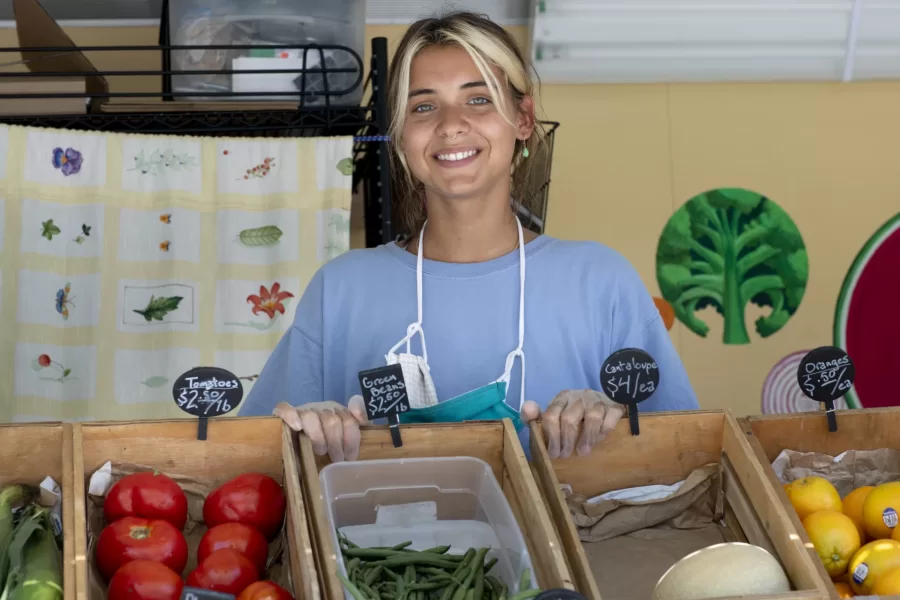

Governance and Tracking Progress
Create robust governance structures that ensure integration of sustainability practices across campus.
- Capture and regularly report all material data for sustainability metrics — using key performance indicators such as building Energy Use Intensity (EUI), carbon reporting, sustainability literacy assessment, and percentage of sustainability-related classes.
- Continue/increase the Committee on Environmental Responsibility’s (CER) role in shaping and developing sustainability programs.
- Provide routine sustainability presentations to the Leadership team and the Board of Trustees with an opportunity for their input and oversight on sustainability goals and progress.
- Include sustainability considerations and life cycle analysis in all high-level strategic planning and budgeting processes.
Investment
Bates believes that incorporating the long-term risks of climate change into the fundamental work of managing the endowment leads to stronger and more durable investment results. Consistent with the college’s principled and pragmatic approach to sustainability efforts on campus, Bates has similarly considered environmental principles when investing the college’s endowment.
Since 2015, the college has halved its investment in traditional fossil fuel- based energy companies from more than six percent to three percent of the endowment, following a steady plan to reduce exposure over time. We have achieved this through a number of actions, including liquidating our public energy-focused funds, allowing our private energy partnerships to wind down, electing to transition alternative investments into a fossil-fuel- free share class, and screening our bond portfolio to eliminate oil, gas and coal holdings.
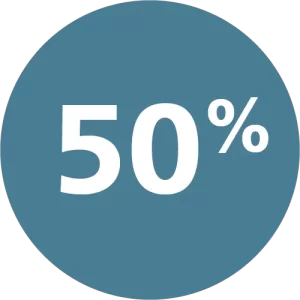
reduction in college investment in fossil fuel-based energy companies since 2015

new investment in private fossil fuel extraction since 2017
Going forward, Bates has formalized efforts aimed to further reduce endowment holdings in fossil fuel related companies. Specifically, Bates will:
- Instruct managers of separately managed equity accounts to sell all stocks of fossil fuel companies, such as oil, gas, and coal, and to refrain from purchasing these types of securities in the future.
- Elect “fossil fuel-free” share classes of alternative investments whenever available.
- No longer commit to new investments in private fossil fuel extraction, exploration, and production funds. The college’s last commitment in this area was made in early 2017, and the college’s involvement with these investments will end as they wind down.
- Actively seek to add renewable resource-focused investments (wind, solar, and other green-specific investments) to the endowment. We believe these actions are consistent with the college’s efforts to incorporate environmental implications into our behaviors and activities on campus. Furthermore, we believe these actions reflect our commitment to act globally and responsibly to combat the climate crisis.

Performance and Metrics
To keep the Leadership team and the Bates community apprised of our progress in the above areas, certain key performance indicators will be regularly reported to Leadership:
- Greenhouse Gas Emissions — Scopes I, II, and III
- New building and major renovations — projected Energy Use Intensity (EUI) and heating system selection
- New solar capacity additions as appropriate
- Percentage of electric vehicles in our fleet
- Number of EV charging stations on campus
- Percentage of sustainability-related classes offered
- Percentage of campus waste diversion
- Percentage of the student body reached by sustainability programs
Conclusion
We are in an auspicious time at Bates for sustainability. We have an engaged Leadership team, a thoughtful and strategic faculty presence, a motivated and hardworking staff, and a student body that has chosen to study here in part due to our environmental commitments. As we celebrate hitting our carbon neutrality goal a full year early, we have successfully brought into being a host of new initiatives. Through the work of many hands, hearts and minds, we have ascended to become a leader in the realm of sustainability in higher education, a continuation of our long history of environmental advocacy and activism.
In short, we are in the best position to dramatically move the needle towards a more environmentally benign future. This document hopes to address some of the ways in which we can move forward by presenting a clear plan with easily actionable steps. It is a collective effort, built on hundreds of suggestions from staff and faculty departments, and student groups from across campus. We have endeavored to give a voice to the sustainability community here at Bates, while keeping our recommendations grounded and specifically tailored to our climate, our resources, and our staffing abilities. The majority of the goals put forth from each area have been created by the very people that manage those sectors, and have the most expertise in that particular area.
If the latest Intergovernmental Panel on Climate Change (IPCC) report is to be taken seriously, we find ourselves living in what may be the most crucial decade in human history. We believe that at Bates, we are lucky enough to have all the right people sitting at the table to do marvelous things. We hope that we collectively take advantage of this moment in time to create a more just, equitable, and sustainable world.
“We find ourselves living in what may be the most crucial decade in human history. We believe that at Bates, we are lucky enough to have all the right people sitting at the table to do marvelous things.”
Tom Twist, Bates Sustainability Manager
